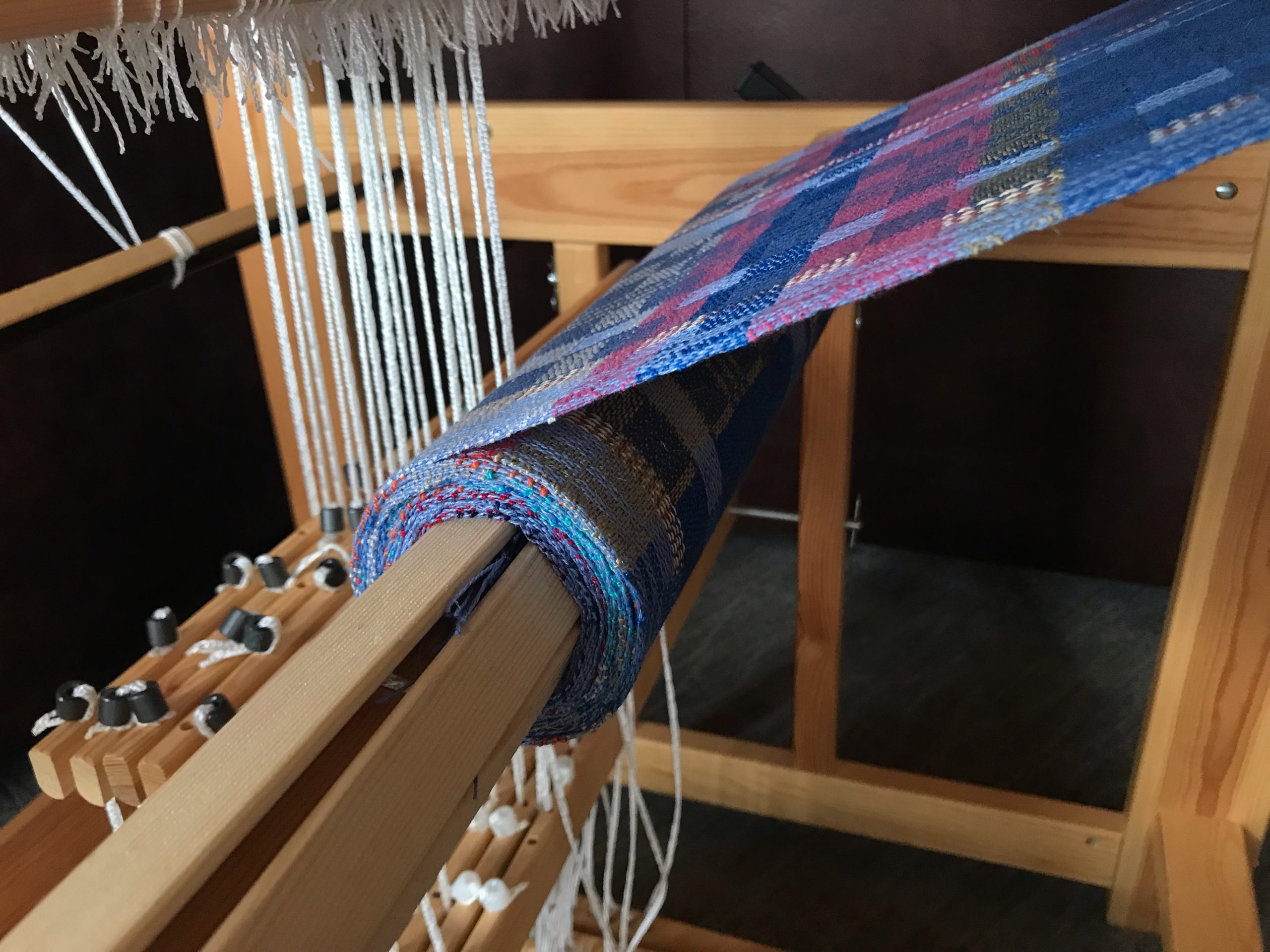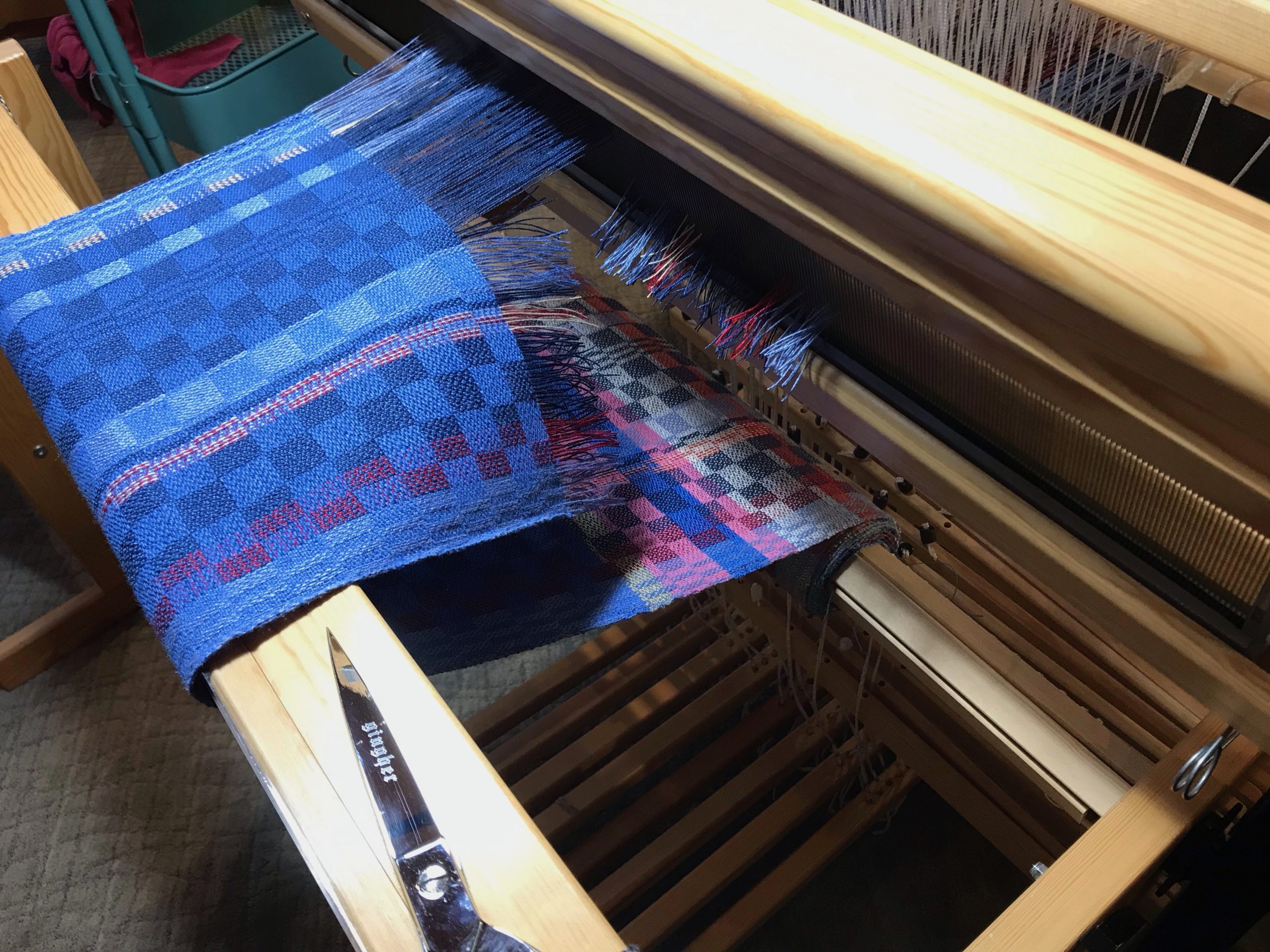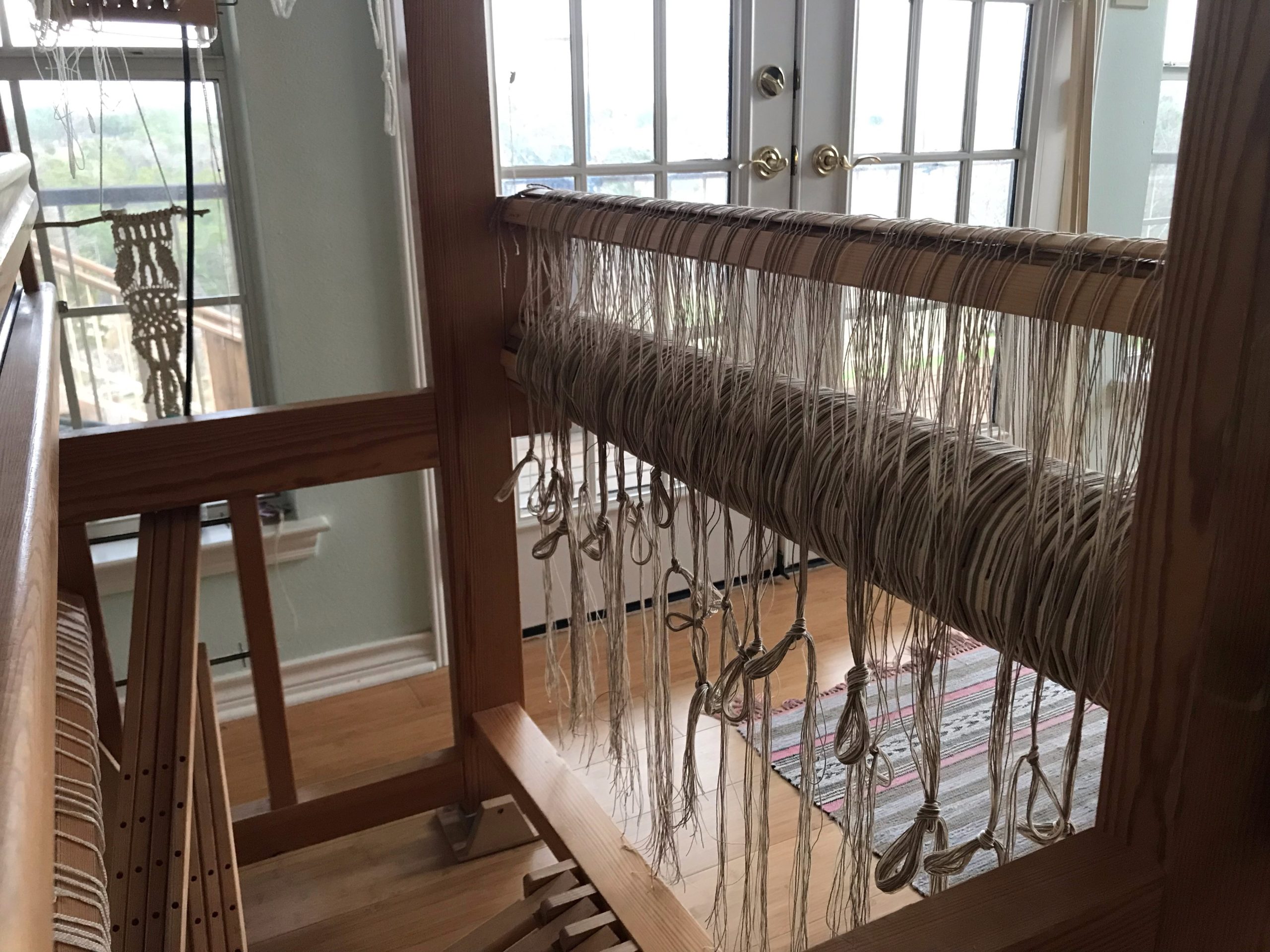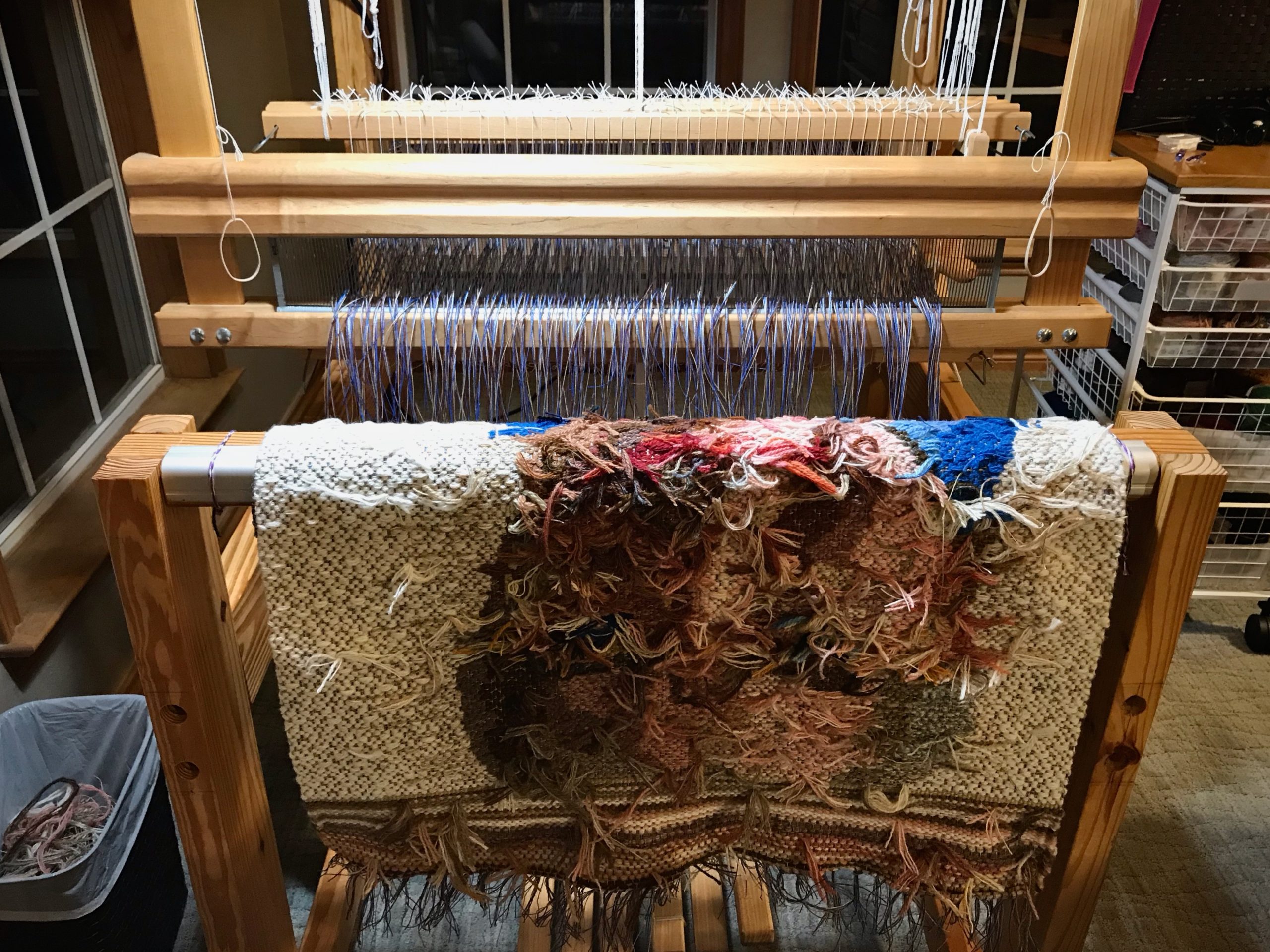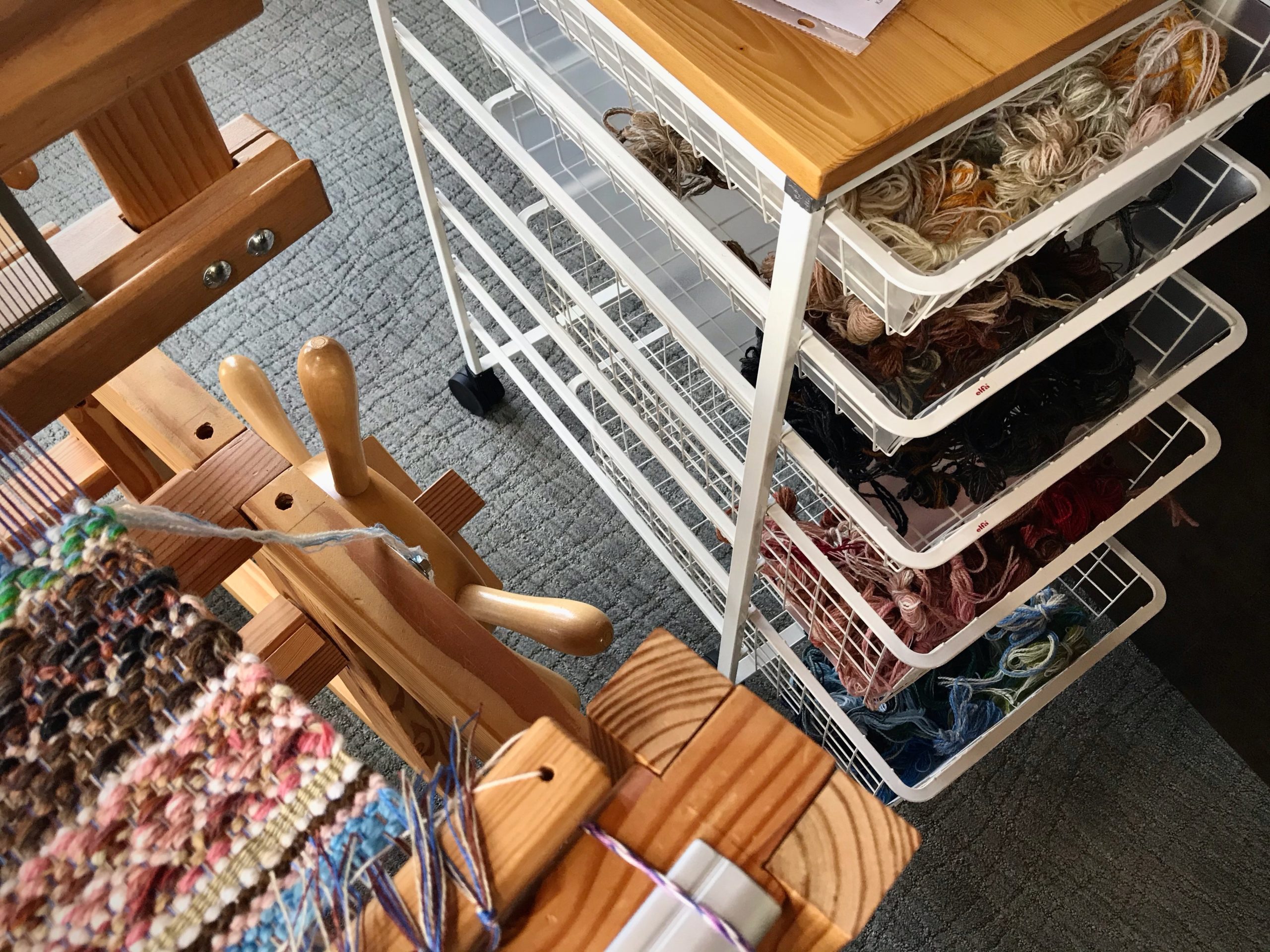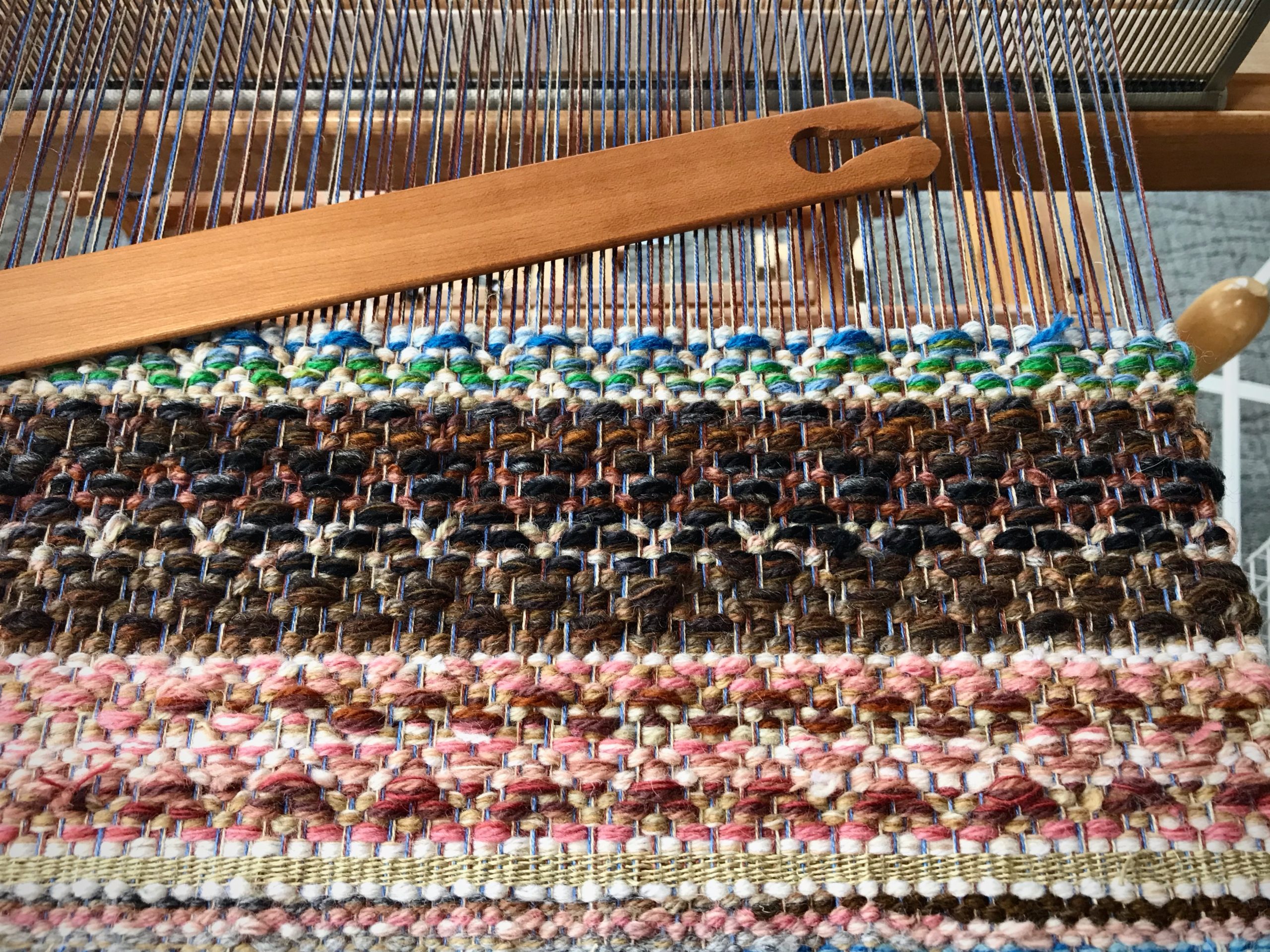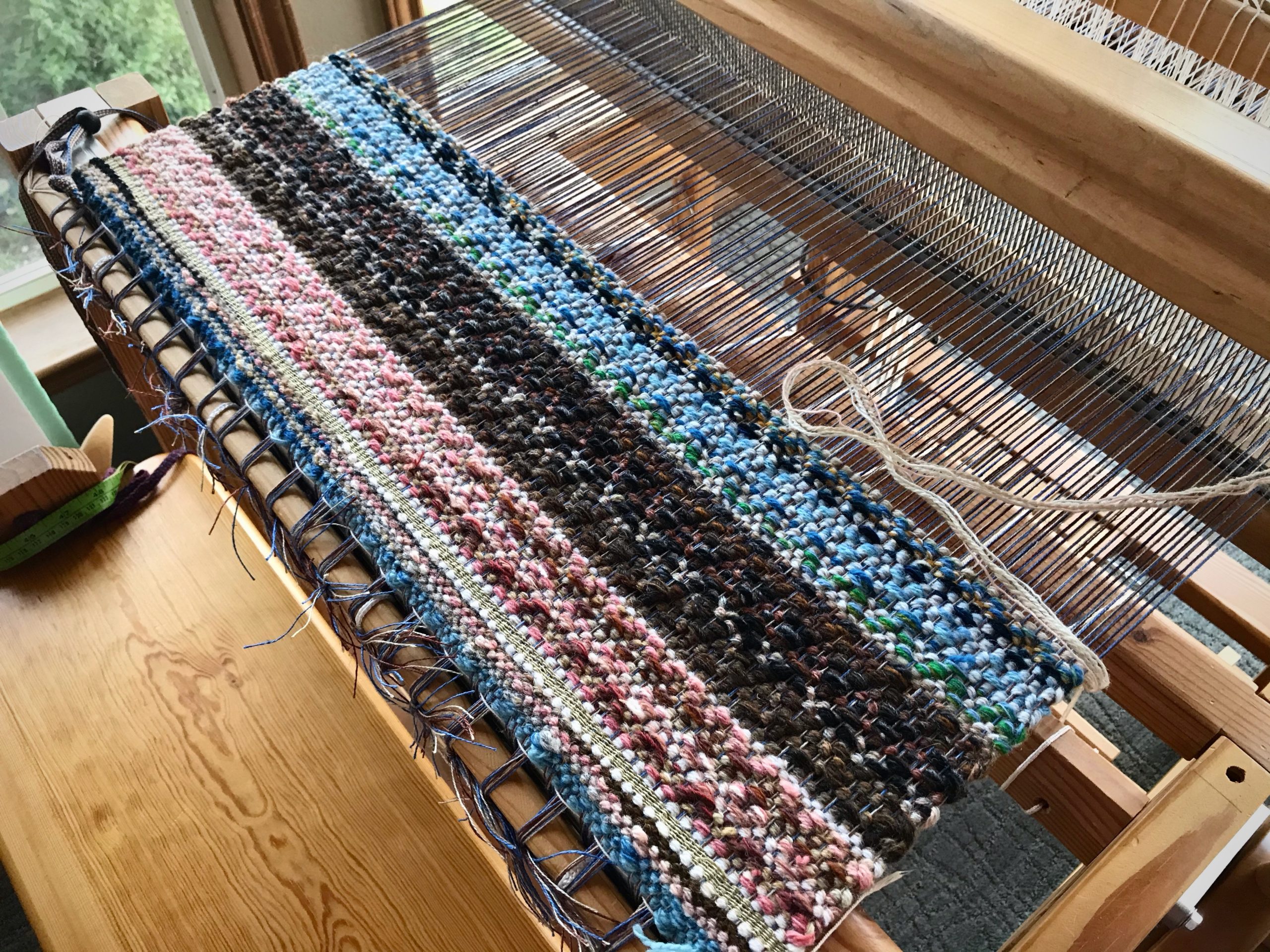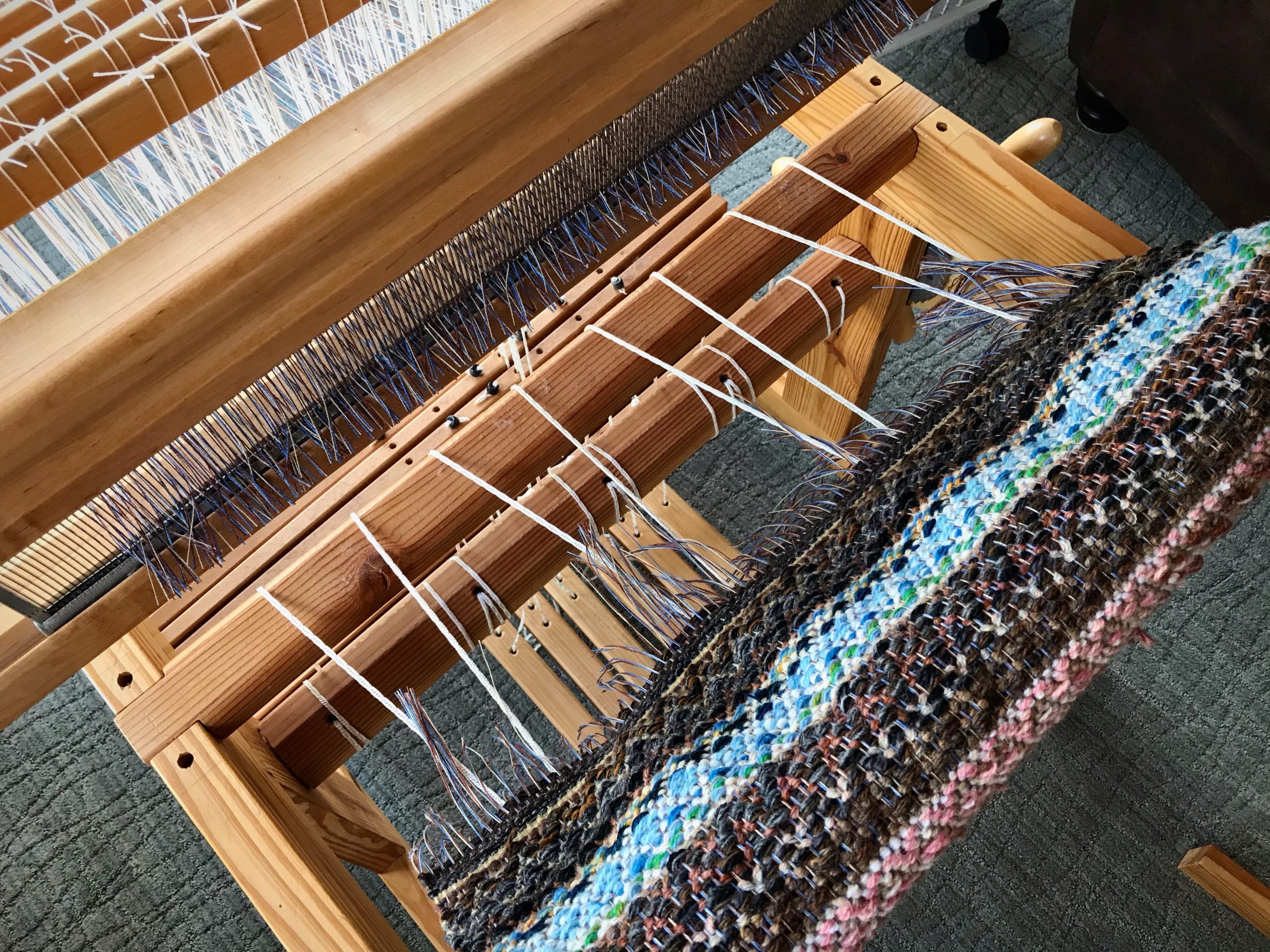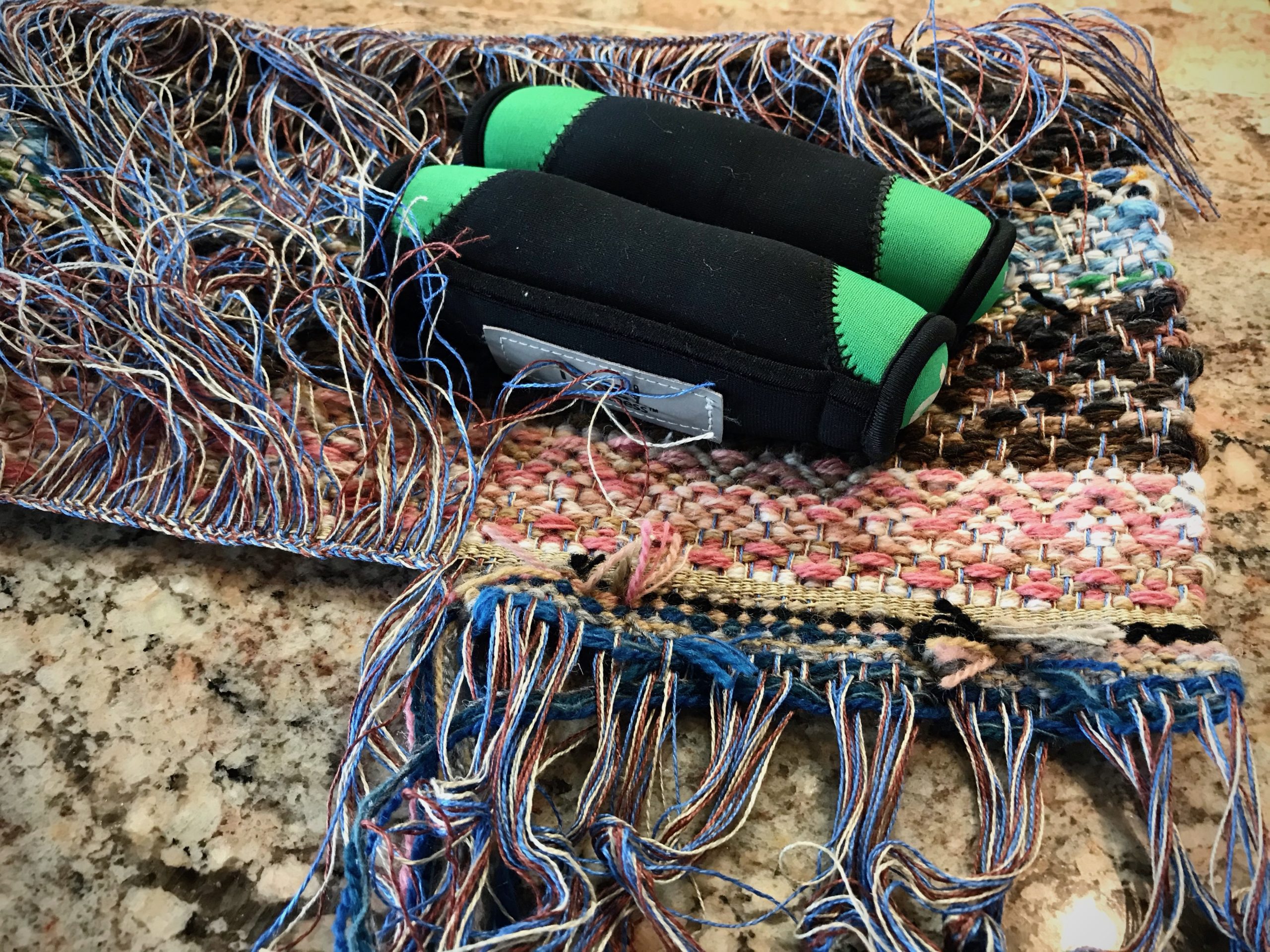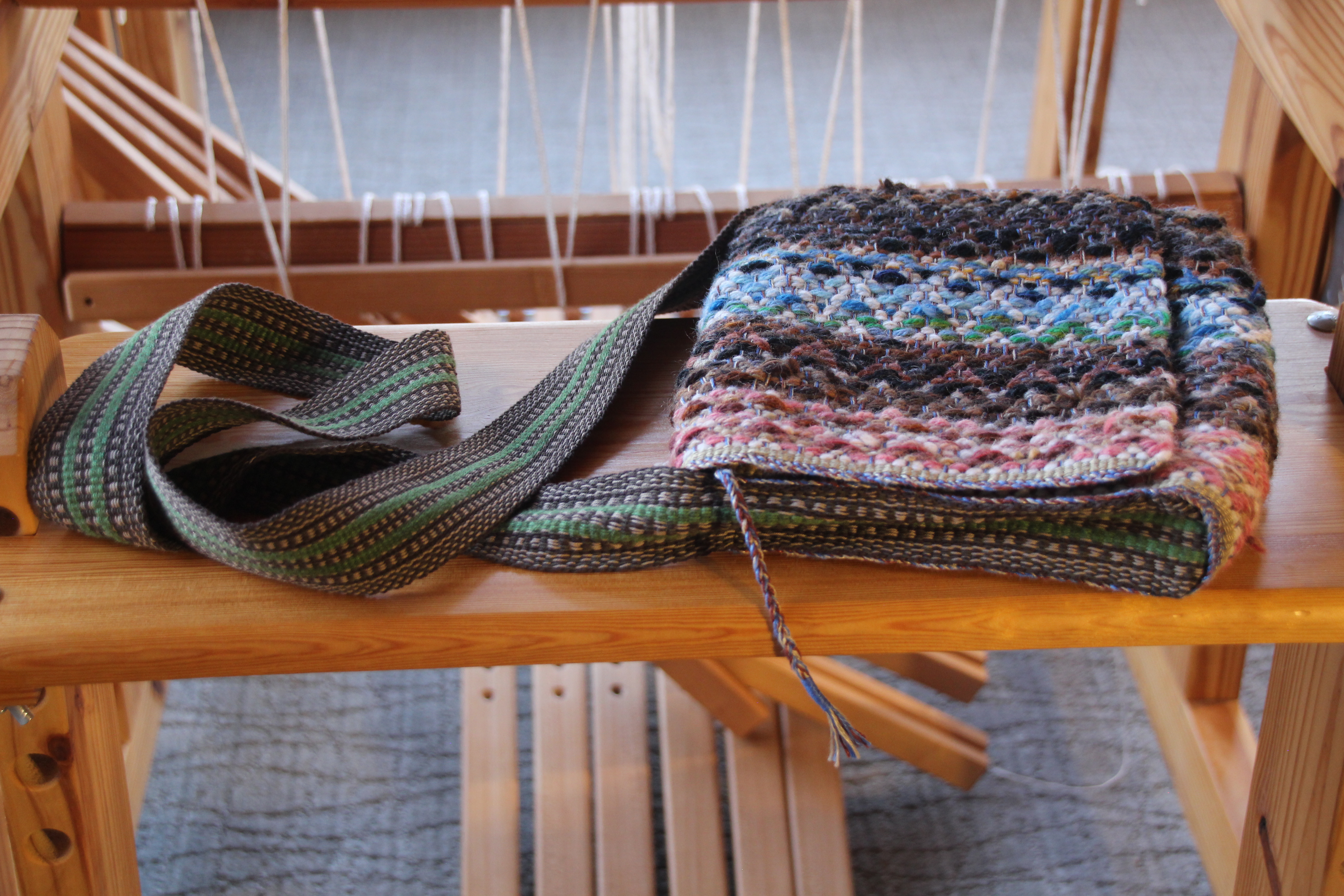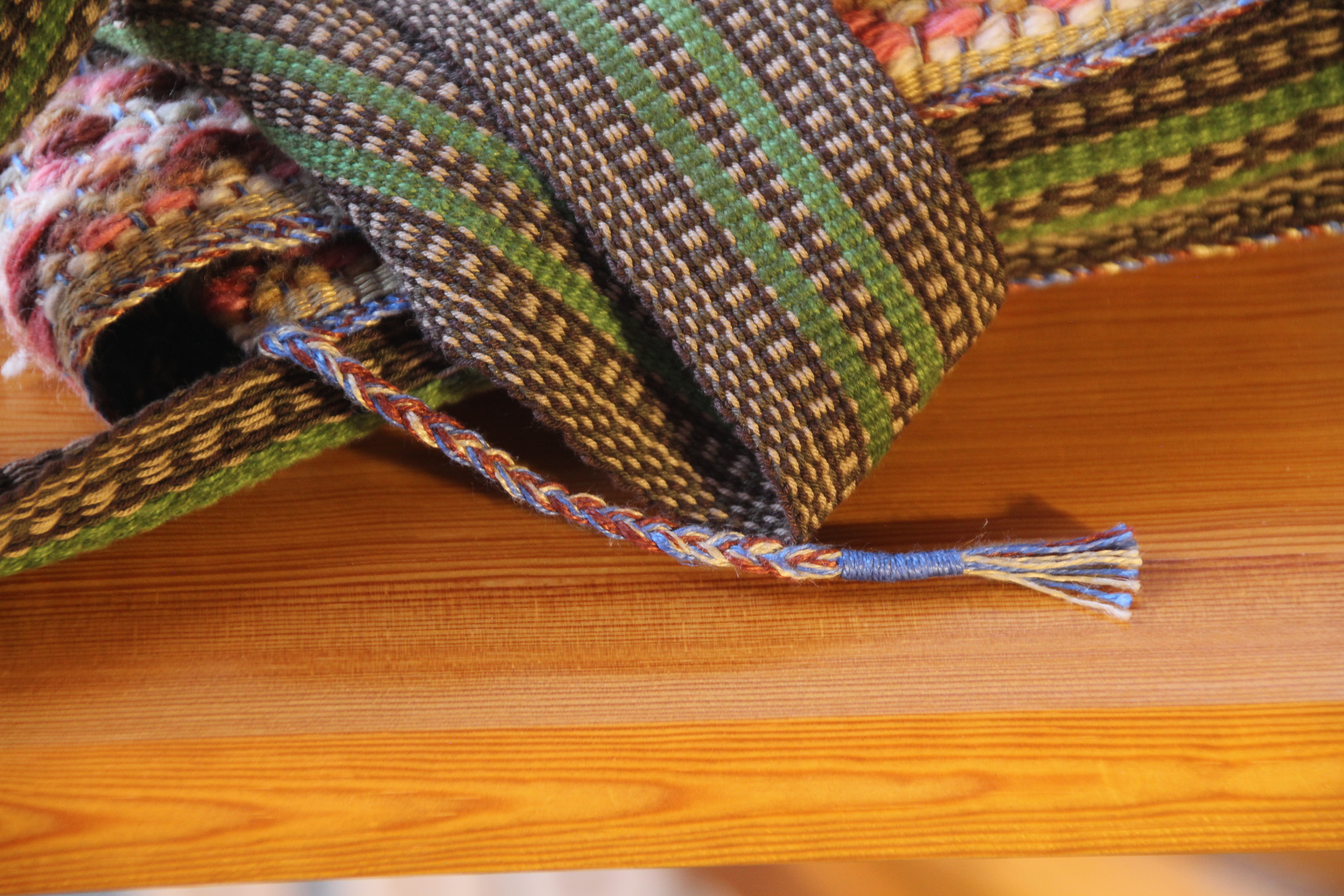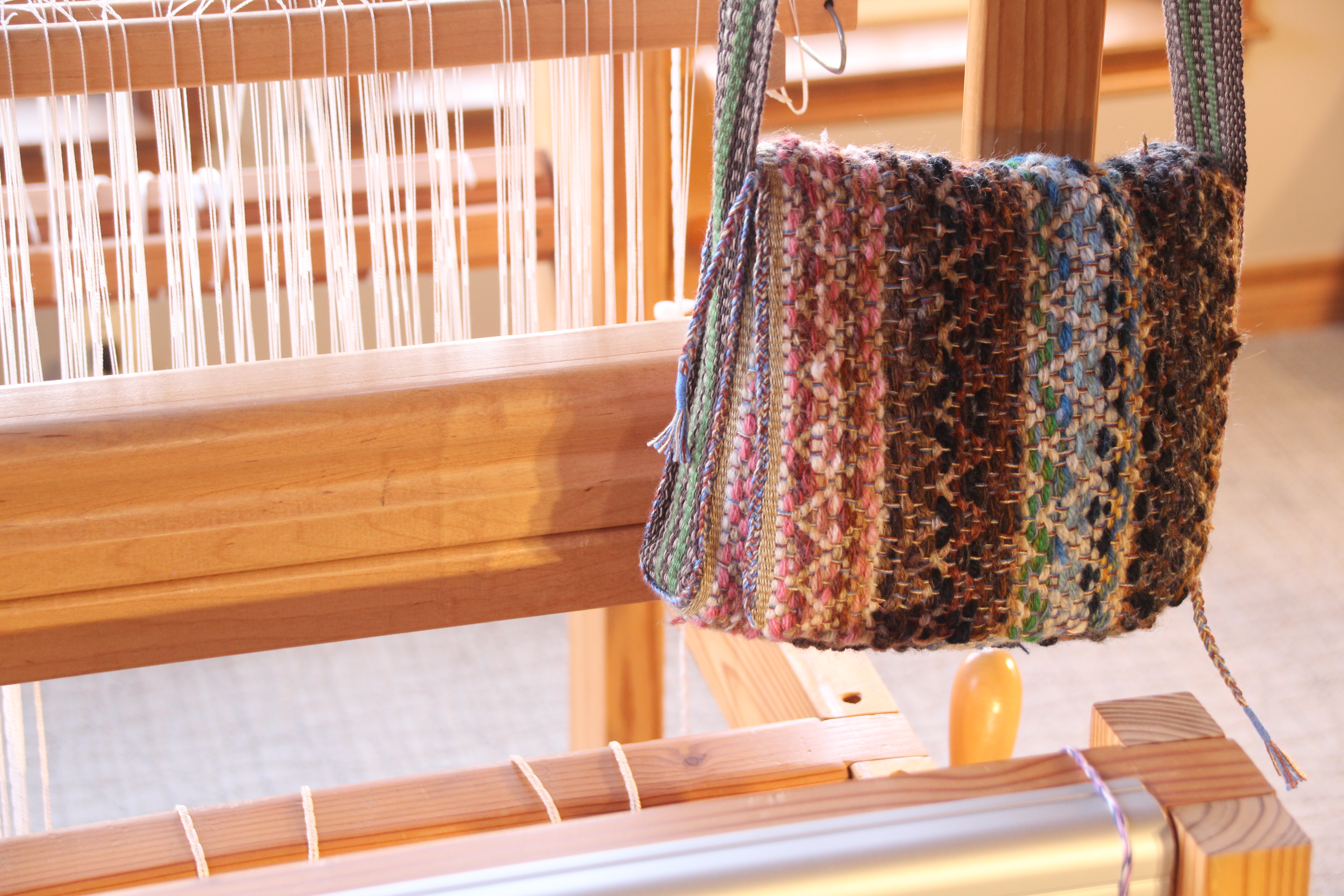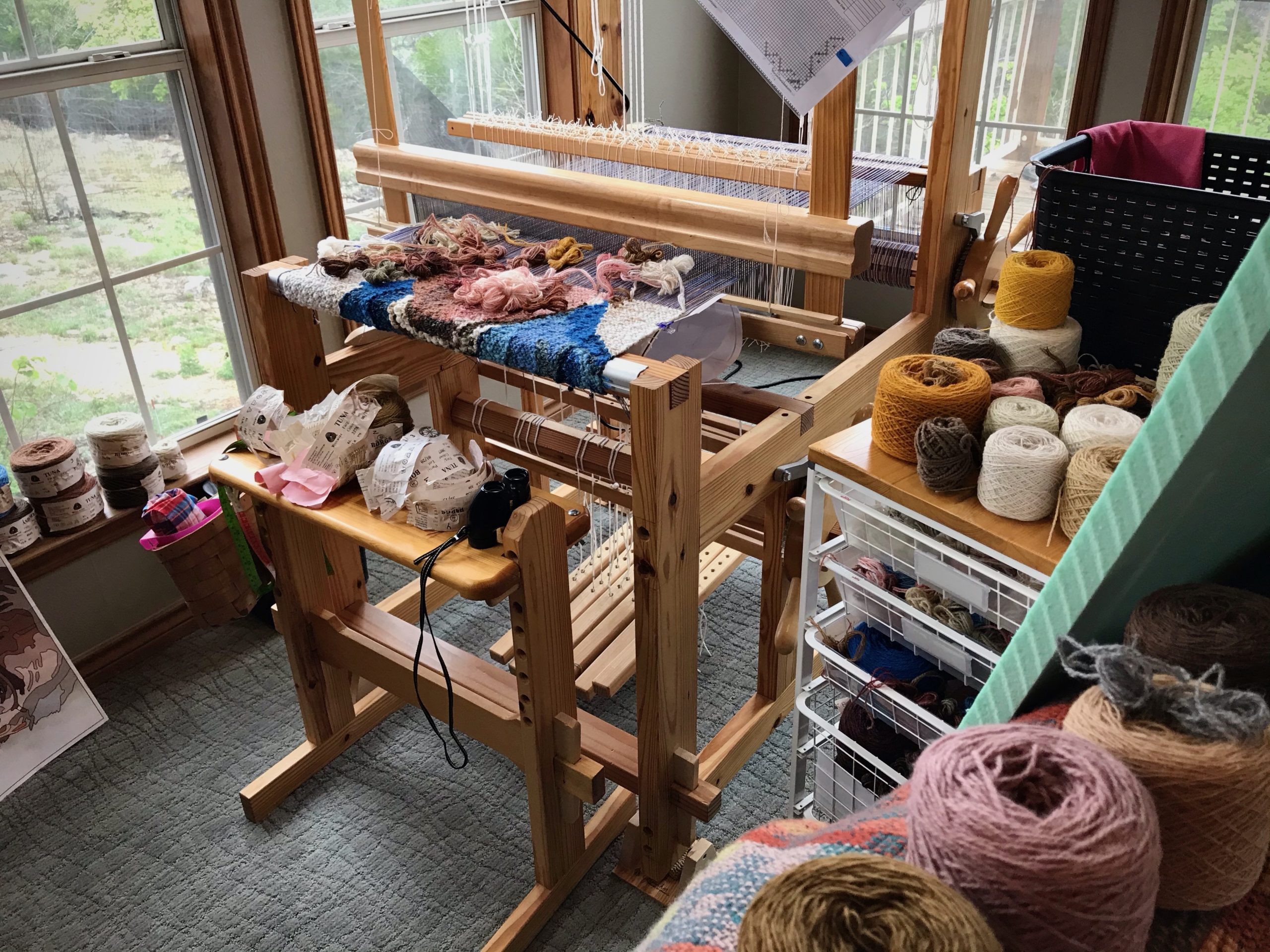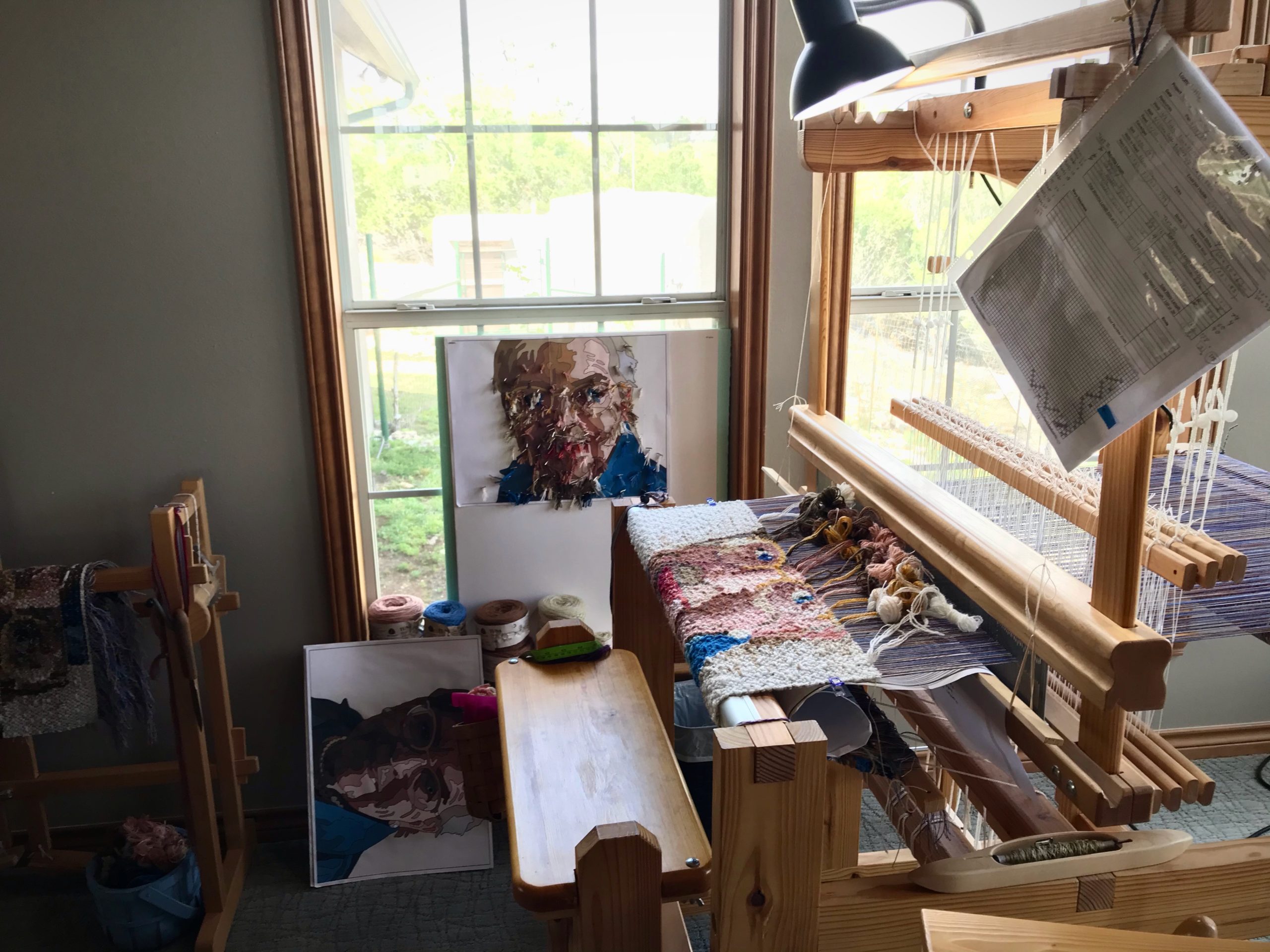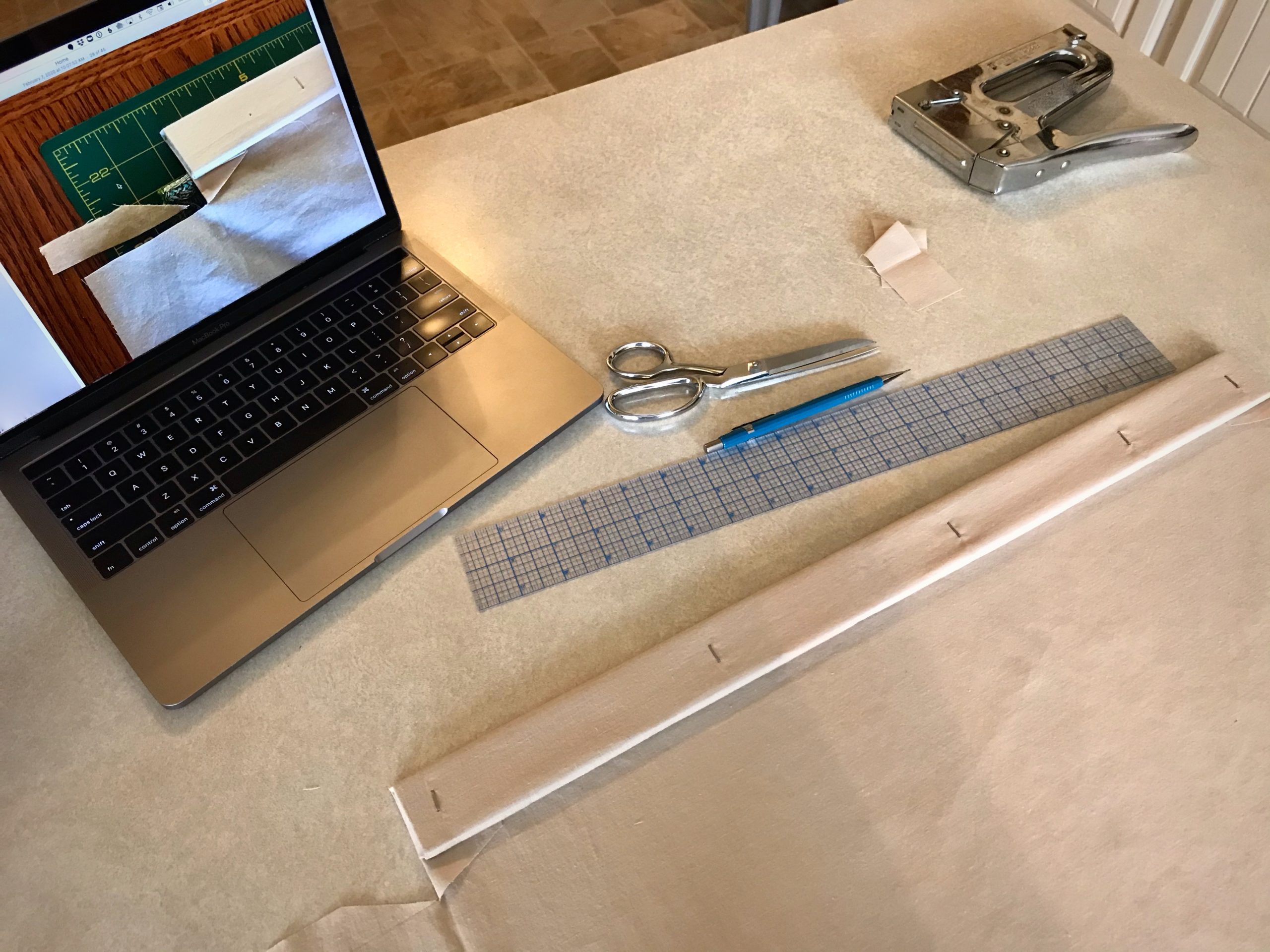Five of my favorite handwoven works are on display in a local exhibit. The Southwest Gourd and Fiber Fine Art Show is the current exhibit (through July 1) at the Kerr Arts and Cultural Center in Kerrville, Texas. This is a competitive show featuring artists from across the US. Steve made beautiful wooden hanging and mounting devices for my pieces. Winter Window is a double-binding rag rug that is displayed as a wall hanging. I thoroughly enjoyed the design process for this rag rug, so I am happy that Winter Window received a Judge’s Special Award.
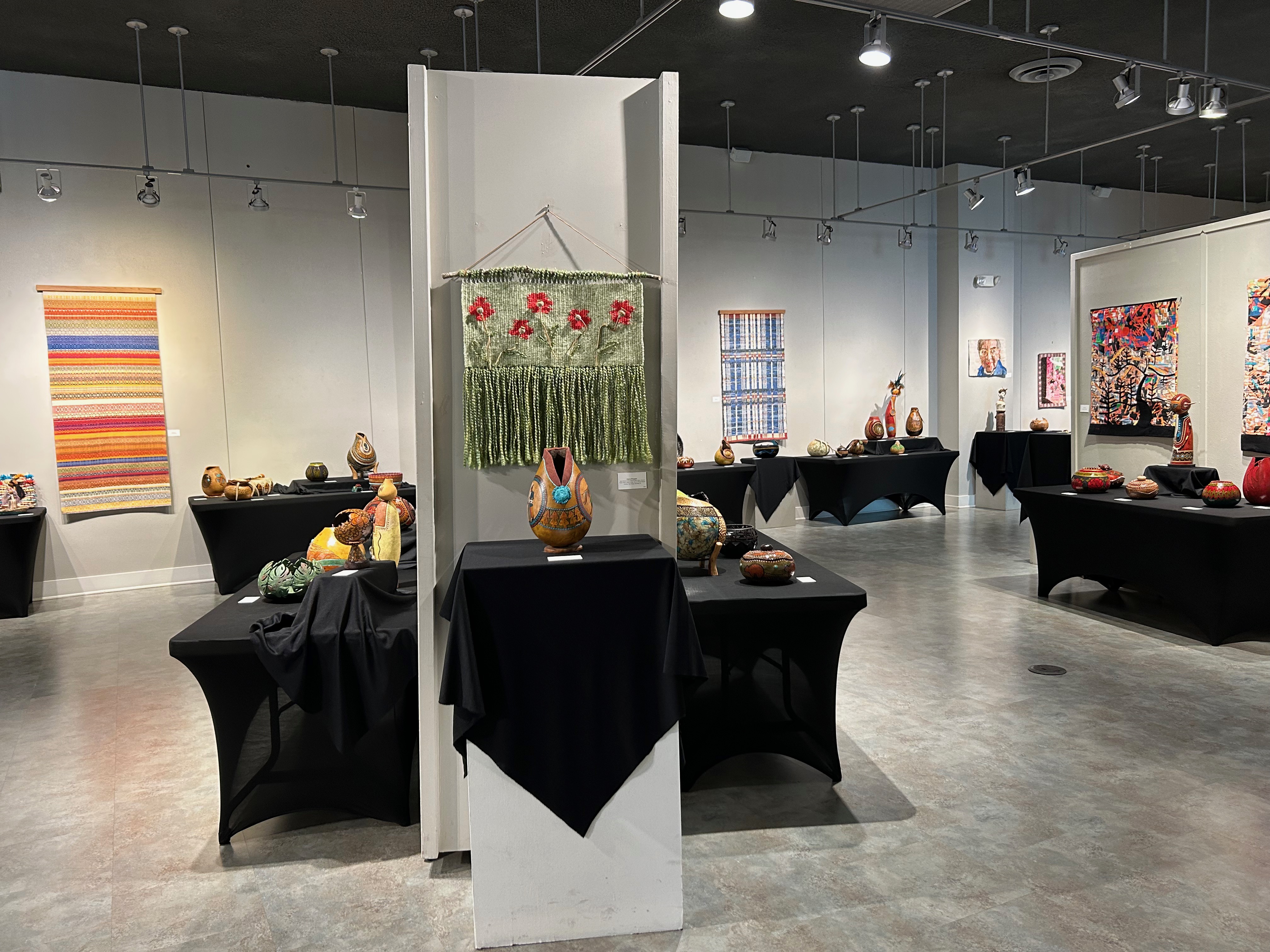
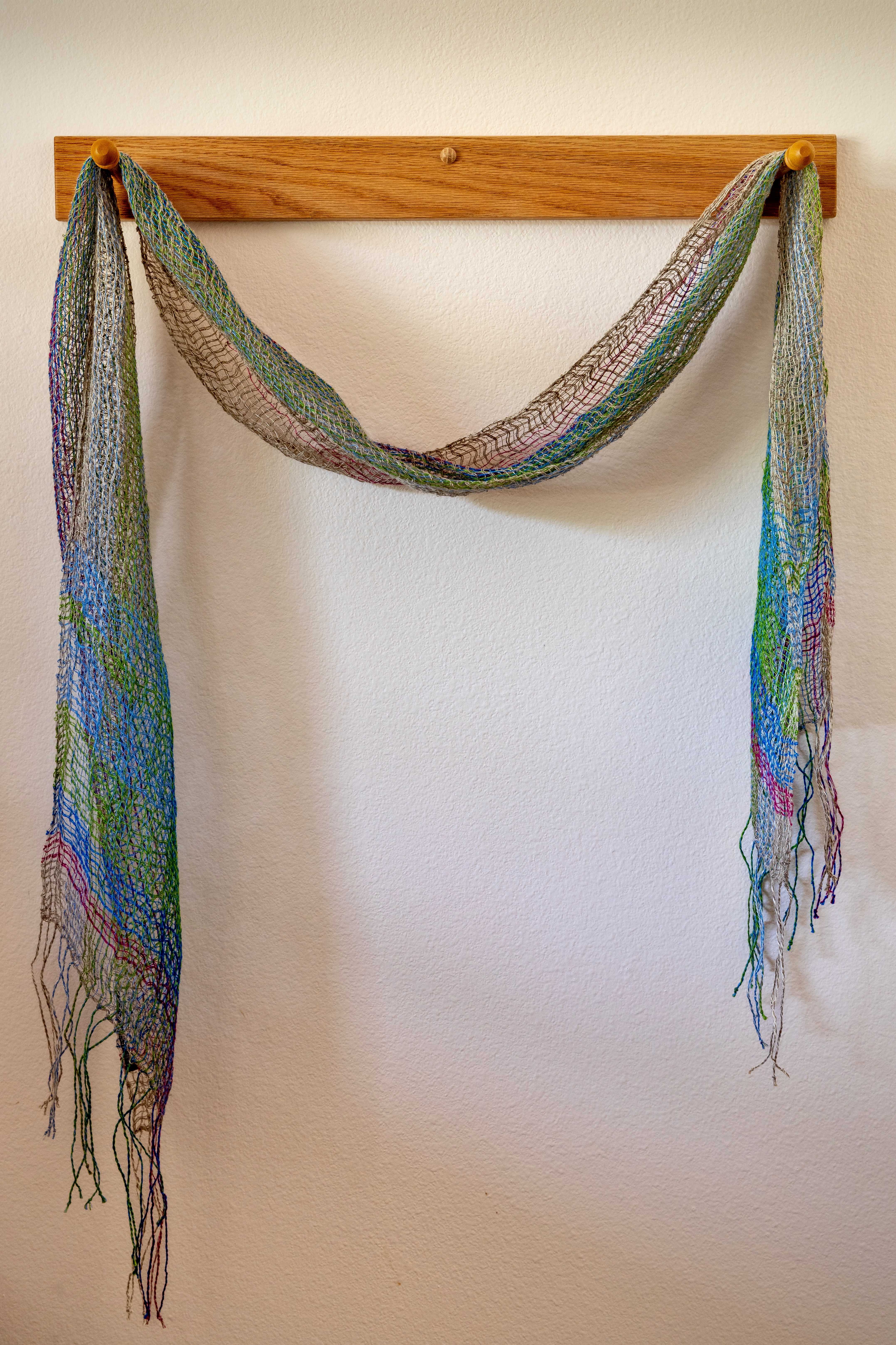
Draped Lace in Three-Shaft Lace Weave
Warp: Linen
Weft: Linen
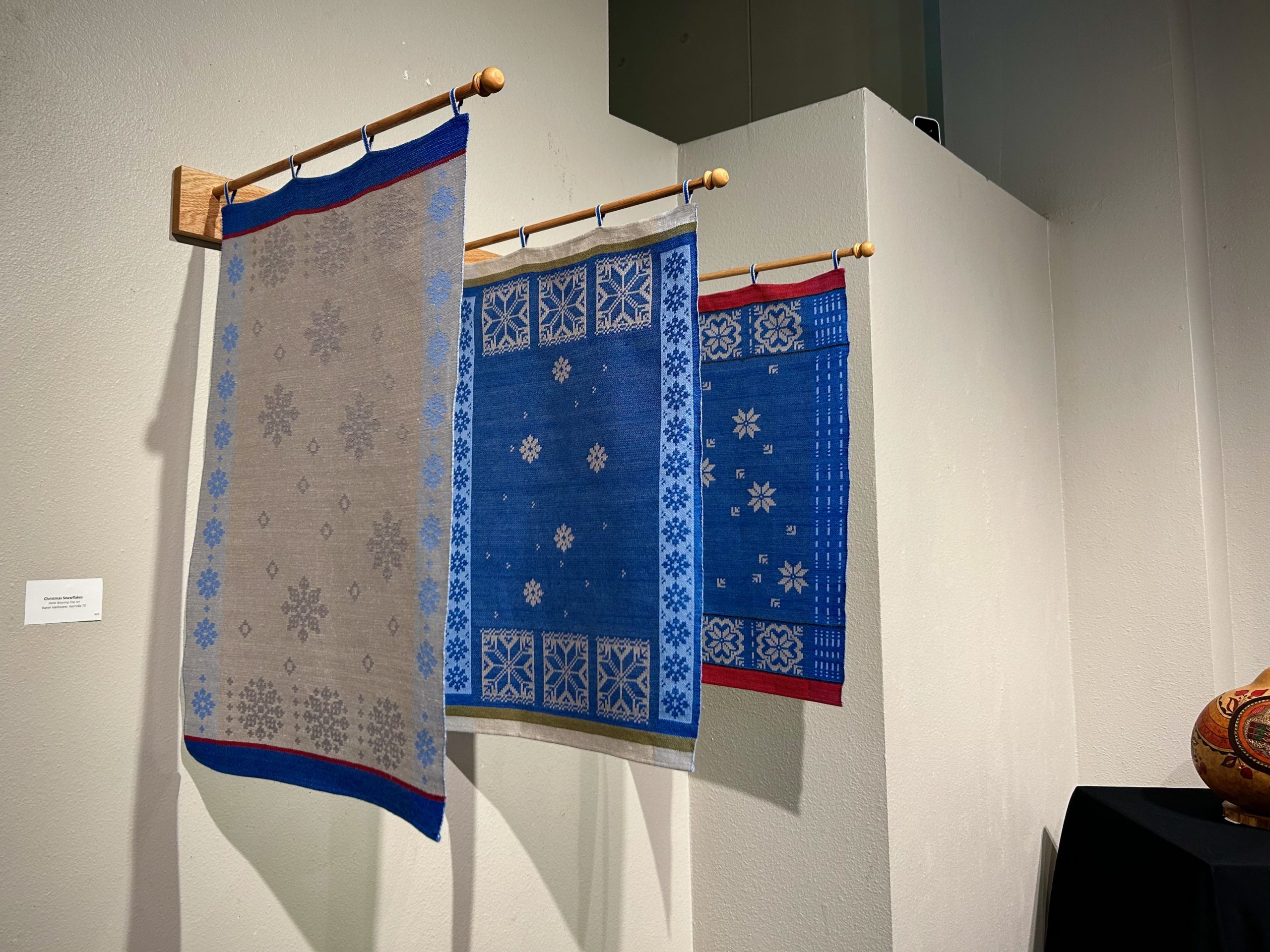
Banners in Six-Shaft Irregular Satin, Drawloom 30 pattern shafts, 148 single units
Warp: Linen/Cotton blend
Weft: Linen
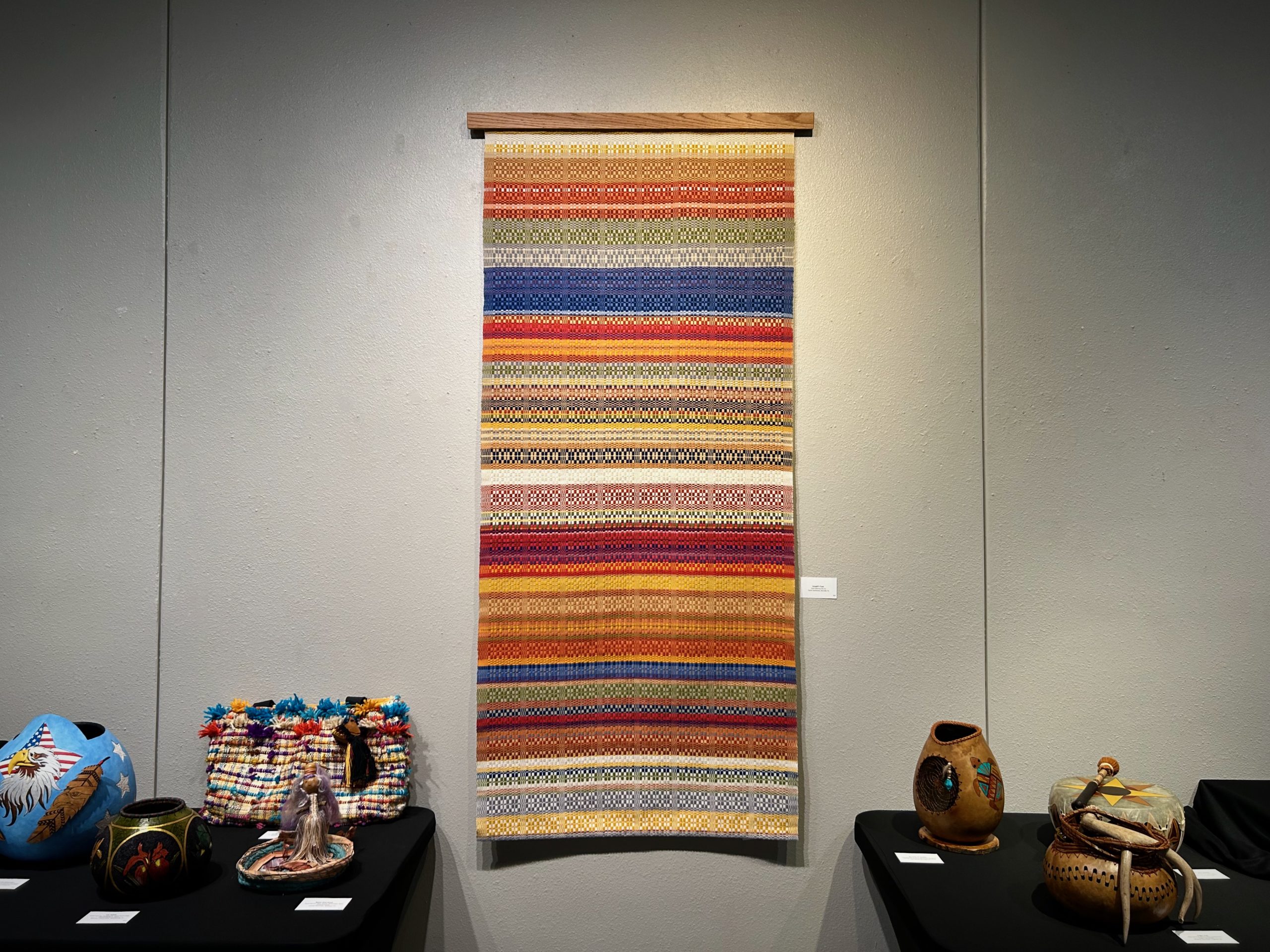
Wall Hanging in Four-Shaft Swedish Monksbelt
Warp: Cotton
Weft: Wool and Cotton
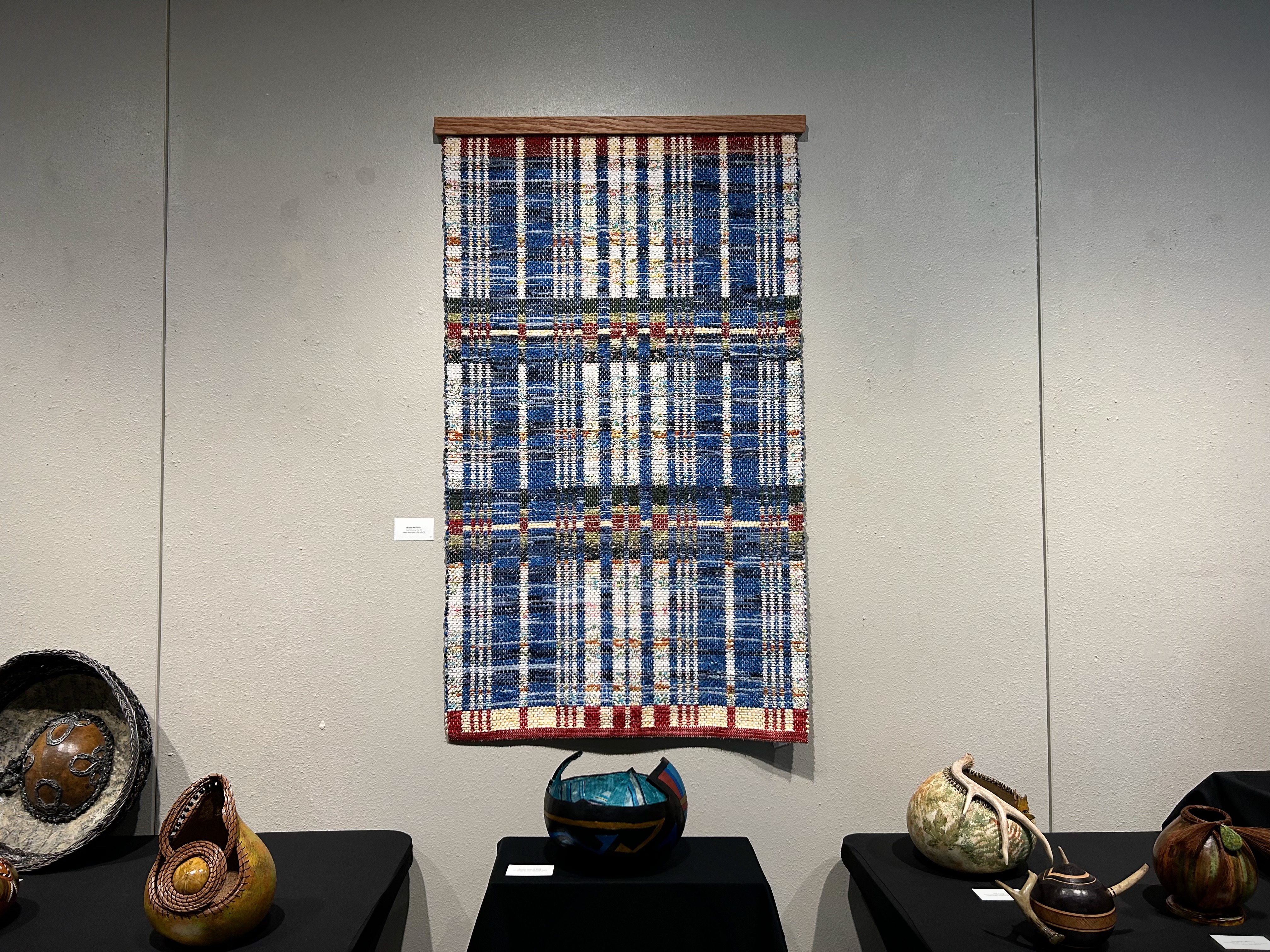
Rag Rug in Four-Shaft Double Binding
Warp: Cotton
Weft: Cotton fabric strips
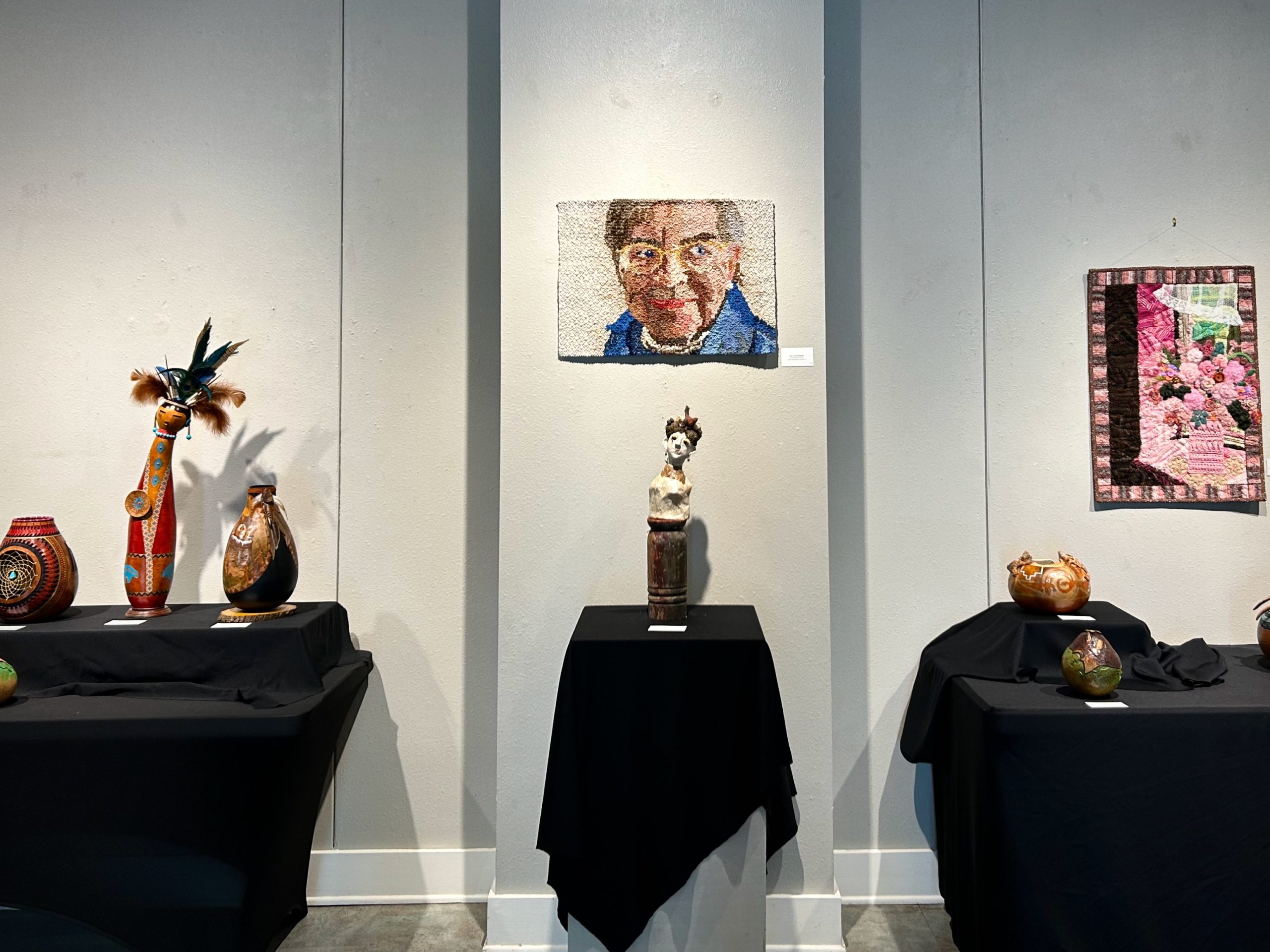
Pictorial Tapestry in Four-Shaft Rosepath
Warp: Linen
Weft: Wool and Linen
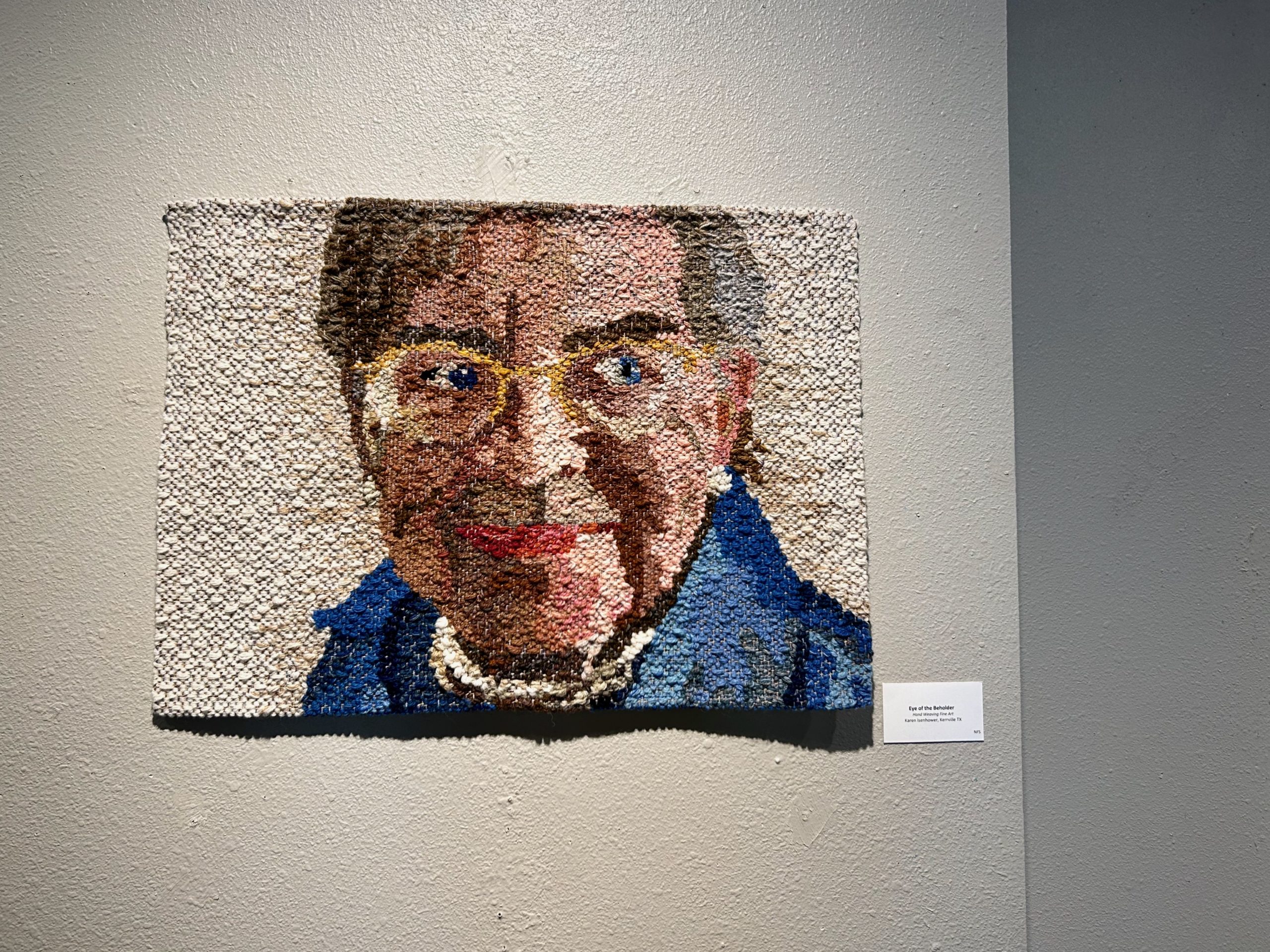
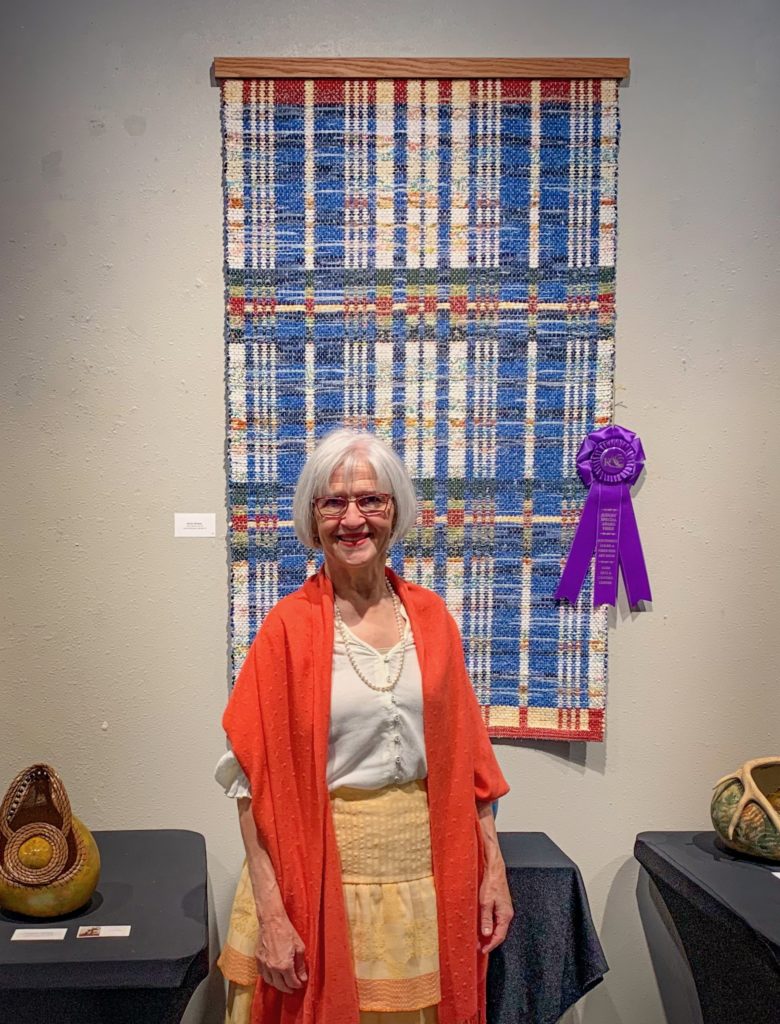
If you hang a rag rug on the wall it becomes fine art. And I’m ok with that.
May others enjoy seeing what you enjoy making.
Happy Weaving,
Karen

